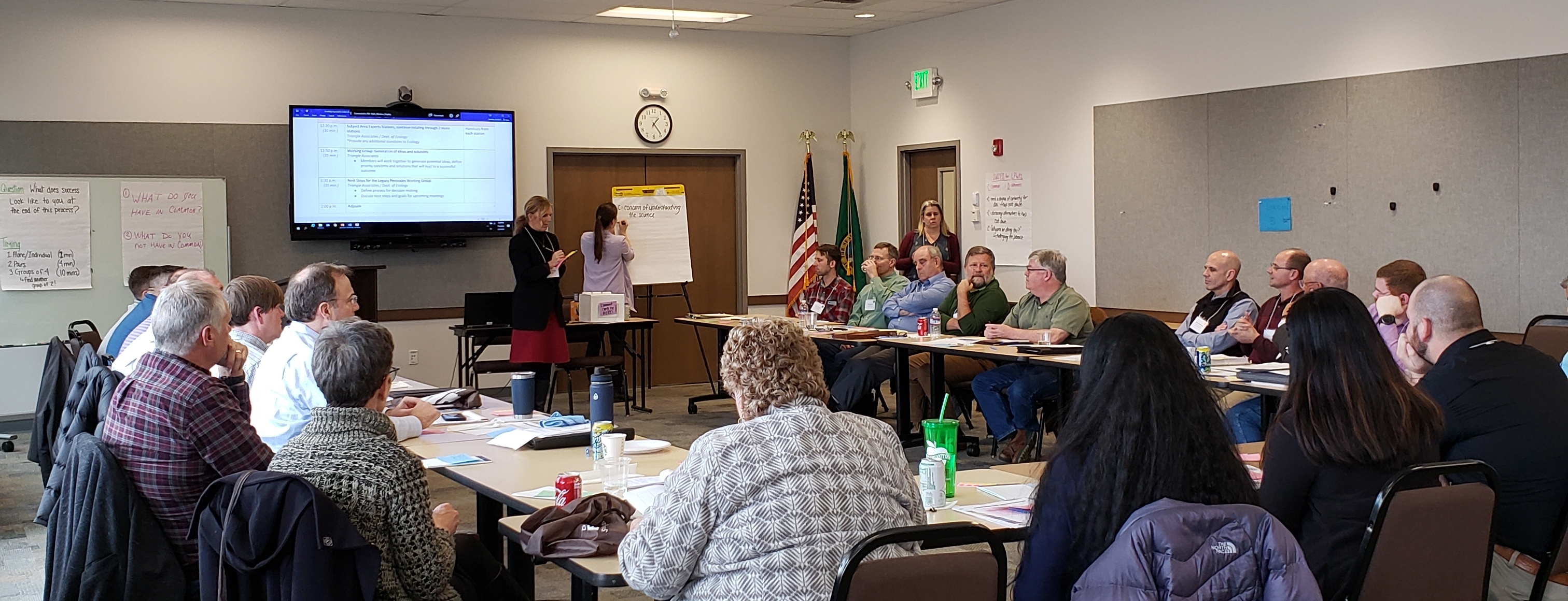
The first meeting of the Legacy Pesticide Working Group in February, 2020, at Ecology's central regional office.
Background
Recently concluding its work, the Legacy Pesticide Working Group has compiled a series of recommendations to help developers, landowners, and community members address lead and arsenic contamination on historic orchard lands in Central Washington. The goal: to provide common sense and cost-effective ways to reduce threats of exposure to the metals that persist in the environment.
In 2019, we convened the working group to help us find the best ways to get historical orchards sampled, and if necessary, cleaned up to meet the requirements of Washington’s environmental cleanup law. After our first couple of meetings, the group met virtually throughout 2020, with more than 30 members participating and representing banking, health, real estate, local government, and homebuilders.
The group held their last meeting in December 2020, and a Final Report was issued in January 2021. To access all the group’s meeting minutes and documents, go to the Legacy Pesticide Working Group webpage.
Legacy Pesticide Working Group recommendations
After a lot of research and conversations, the working group made several recommendations that we plan to implement. They include:
- A comprehensive public education and outreach campaign. This would include mailings, meetings, presentations, and community events targeted to those who live on historical orchards.
- A set of pre-approved cleanups from Ecology. Any one of these cleanups could be used on a historical orchard with lead and arsenic contamination. This gives people time to plan ahead and assurance that their work will be accepted under state regulations. Ecology calls these pre-approvals model remedies. The Draft Model Remedies for Cleanup of Former Orchard Properties in Central and Eastern Washington is currently out for public review and comment.
- An integrated development permit review process. Local governments have land use and building permits for residential development projects, including single-family home construction, residential subdivisions, and multifamily developments. They see those projects first, and are in a good position to let developers and homebuilders know about Ecology’s requirements.
- Soil banks. Projects need to have a place to get clean soil, and dispose of contaminated soil. Soil banks could serve this purpose. The legislature just approved funding to Ecology study the feasibility of soil banks.
Maps and sampling
We’ve also done some work to help people figure out if they live on historic orchard lands. We used old aerial photographs to create an online mapping tool. Go to our Dirt Alert map and enter your own address to find out if your property was an old orchard. If your property has been sampled, those results will be on the map too.
We're also requiring sampling for old orchards when the land use changes, for example, from agriculture to residential. Free soil sampling is available to members of the community. If interested, email us to schedule your sampling.
On the horizon, we will be offering workshops to homebuilders and developers. We also provided funding for a demonstration development project in the community of Manson on Lake Chelan. Look for a future blog post with more details.
Contact information
|
Jill Scheffer |
Jeff Newschwander |

